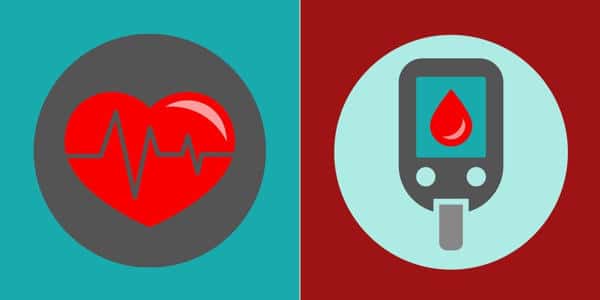A new statement summarizes research on how obesity affects the diagnosis, management, and outcomes of heart and blood vessel disease, heart failure, and arrhythmias. Waist circumference, an indicator of abdominal obesity, should be measured on a regular basis because it can be a warning sign of an increased risk of cardiovascular disease. Weight loss interventions may improve risk factors but may not always improve coronary artery disease outcomes.
“This scientific statement provides the most recent research and information on the relationship between obesity and obesity treatment in coronary heart disease, heart failure, and arrhythmias,” said Tiffany M. Powell-Wiley, M.D., M.P.H., FAHA, chair of the writing committee and a Stadtman Tenure-Track Investigator and chief of the Social Determinants of Obesity and Cardiovascular Risk Laboratory at the University of Pennsylvania.
“The timing of this information is important because the obesity epidemic contributes significantly to the global burden of cardiovascular disease and numerous chronic health conditions that also impact heart disease.”
People with abdominal obesity and excess fat around the body’s mid-section and organs have an increased risk of heart disease even if their body mass index (BMI) measurement is within a healthy weight range, according to a new Scientific Statement from the American Heart Association published today in the Association’s flagship journal, Circulation.
A better understanding of obesity and its impact on cardiovascular health emphasizes abdominal obesity, also known as visceral adipose tissue, or VAT, as a risk factor for cardiovascular disease. VAT is commonly determined by waist circumference, the waist circumference to height ratio (taking body size into account), or the waist-to-hip ratio, which has been shown to predict cardiovascular death independently of BMI.
Experts recommend that both abdominal circumference and BMI be measured during routine health care visits because a high waist circumference or a low waist-to-hip ratio, even in healthy-weight individuals, may indicate an increased risk of heart disease. Abdominal obesity is also associated with fat accumulation around the liver, which frequently leads to non-alcoholic fatty liver disease, which increases the risk of cardiovascular disease.
“Studies that have looked at the relationship between abdominal fat and cardiovascular outcomes confirm that visceral fat is a clear health risk,” Powell-Wiley said.

Abdominal obesity has such a strong risk-inducing power that even in people who are overweight or obese based on BMI, low levels of fat tissue around their midsection and organs may still indicate lower cardiovascular disease risks. This concept, known as “metabolically healthy obesity,” appears to vary depending on race/ethnicity and gender.
Around 3 billion people worldwide are overweight (BMI = 25 to 29.9 kg/m2) or obese (BMI?30 kg/m2). Obesity is a complex disease influenced by a variety of factors, including biological, psychological, environmental, and societal factors, all of which may increase a person’s risk of obesity. Obesity is linked to an increased risk of coronary artery disease and death from cardiovascular disease, as well as many other cardiovascular risk factors and health conditions, such as dyslipidemia (high cholesterol), type 2 diabetes, high blood pressure, and sleep disorders.
Experts reviewed research on managing and treating obesity, particularly abdominal obesity, for this statement. According to the writing group, the calorie restriction can reduce abdominal fat, and aerobic exercise is the most beneficial physical activity for reducing abdominal obesity. According to their findings, meeting the current recommendations of 150 minutes of physical activity per week may be enough to reduce abdominal fat, with no additional loss from longer activity times. In some cases, exercise or a combination of dietary changes and physical activity has been shown to reduce abdominal obesity even in the absence of weight loss.
Changes in lifestyle and subsequent weight loss improve blood sugar, blood pressure, triglyceride, and cholesterol levels (a group of factors known as metabolic syndrome), as well as reduce inflammation, improve blood vessel function, and treat non-alcoholic fatty liver disease, However, no reduction in coronary artery disease events has been demonstrated in studies of lifestyle change programs (such as heart attack or chest pain).
Compared to non-surgical weight loss, bariatric surgery for weight loss treatment is associated with a lower risk of coronary artery disease. This disparity could be attributed to the greater amount of weight loss and the resulting changes in metabolism that are common following bariatric surgery.
“More research is needed to identify effective interventions for obese patients that improve cardiovascular disease outcomes and reduce cardiovascular disease mortality, as has been seen with bariatric surgery,” Powell-Wiley said.
The statement also addresses the “obesity paradox,” which is occasionally observed in research, particularly in populations that are overweight or obese (BMI = 30 to 34.9 kg/m2). The paradox implies that, while being overweight or obese is a strong risk factor for the development of cardiovascular disease, it is not always a risk factor for poor cardiovascular outcomes. The writing group observes that people who are overweight or obese are often screened for cardiovascular disease earlier than people who are a healthy weight, resulting in earlier diagnoses and treatment.
“The underlying mechanisms for the obesity paradox are still unknown,” Powell-Wiley said. “Despite the paradox for short-term cardiovascular disease outcomes, data show that patients with overweight or obesity have cardiovascular disease events at a younger age, live with cardiovascular disease for a longer period of time, and have a shorter average lifespan than patients with normal weight.”
The writing group reports that there are now “convincing data” that obesity may cause atrial fibrillation, a quivering or irregular heartbeat, after reviewing the effects of obesity on a common heart rhythm disorder. According to estimates, obesity may be responsible for one-fifth of all atrial fibrillation cases and 60% of recently documented increases in people with atrial fibrillation. According to research, people with atrial fibrillation who lost a lot of weight saw a significant reduction in the amount of time they were in atrial fibrillation.
“The research provides strong evidence that weight management, in addition to standard treatments to control heart rate, rhythm, and clotting risk, should be included as an essential aspect of managing atrial fibrillation,” Powell-Wiley said.
The statement identifies future research areas, including a call for more research into lifestyle interventions that may be most effective in reducing visceral adiposity and improving cardiovascular outcomes. “It’s critical to understand how nutrition can be personalized based on genetics or other markers for cardiovascular disease risk,” Powell-Wiley said.
“As the prevalence of overweight and obesity among adolescents worldwide rises, it is critical to address how best to develop upstream primary prevention interventions and better treatment strategies, particularly for young patients with severe obesity,” she added.
















